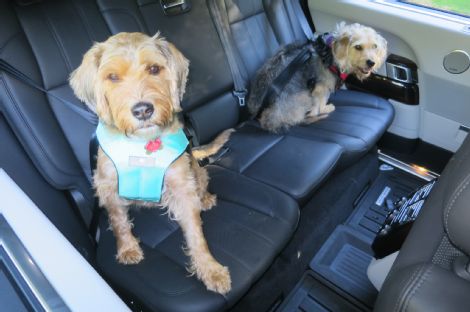I’ve never had children, but two years ago we adopted a rescue beagle/schnauzer mix that quickly occupied the center of our universe. She goes with us everywhere we can take her, and on car journeys she’s always either in a tethered safety harness or (for longer trips) in the wire cage she sleeps in. Well, according to crash tests recently conducted by the Center for Pet Safety (with Subaru sponsorship), we’re being as reckless transporting Snickers as my parents were when they allowed me to free-roam the station wagon interior. Our restraints only prevent her from distracting us.
Just as there wasn’t much child-restraint safety research available to inform my parents, the CPS only began pioneering pet crash-safety testing in 2011. That first pet-harness test was designed using the Federal Motor Vehicle Safety Standard 213 for child-restraint systems as its guideline, and it determined that none—not one—of the four brands tested managed to safely restrain a 55-pound test dummy dog, with most indicating “Extremely low likelihood of survivability for the animal and danger to humans when the dog becomes a missile.” The industry took heed and in 2013 when the CPS partnered with Subaru for its second round of harness testing, the results were better. Four brands failed a static load test, but another seven survived and advanced to the dynamic sled crash test phase. Those results clearly indicated that tether devices intended to give the dog a bit more range of motion are all catastrophically unsafe, allowing the dog to become a missile, endangering human passengers and risking severe pet injury. Only the Sleepypod Clickit Utility harness ($90), which attaches directly to the lap and shoulder belt with auxiliary side straps mounted to the vehicle’s LATCH child-seat hooks, safely retained the dog test dummy.





